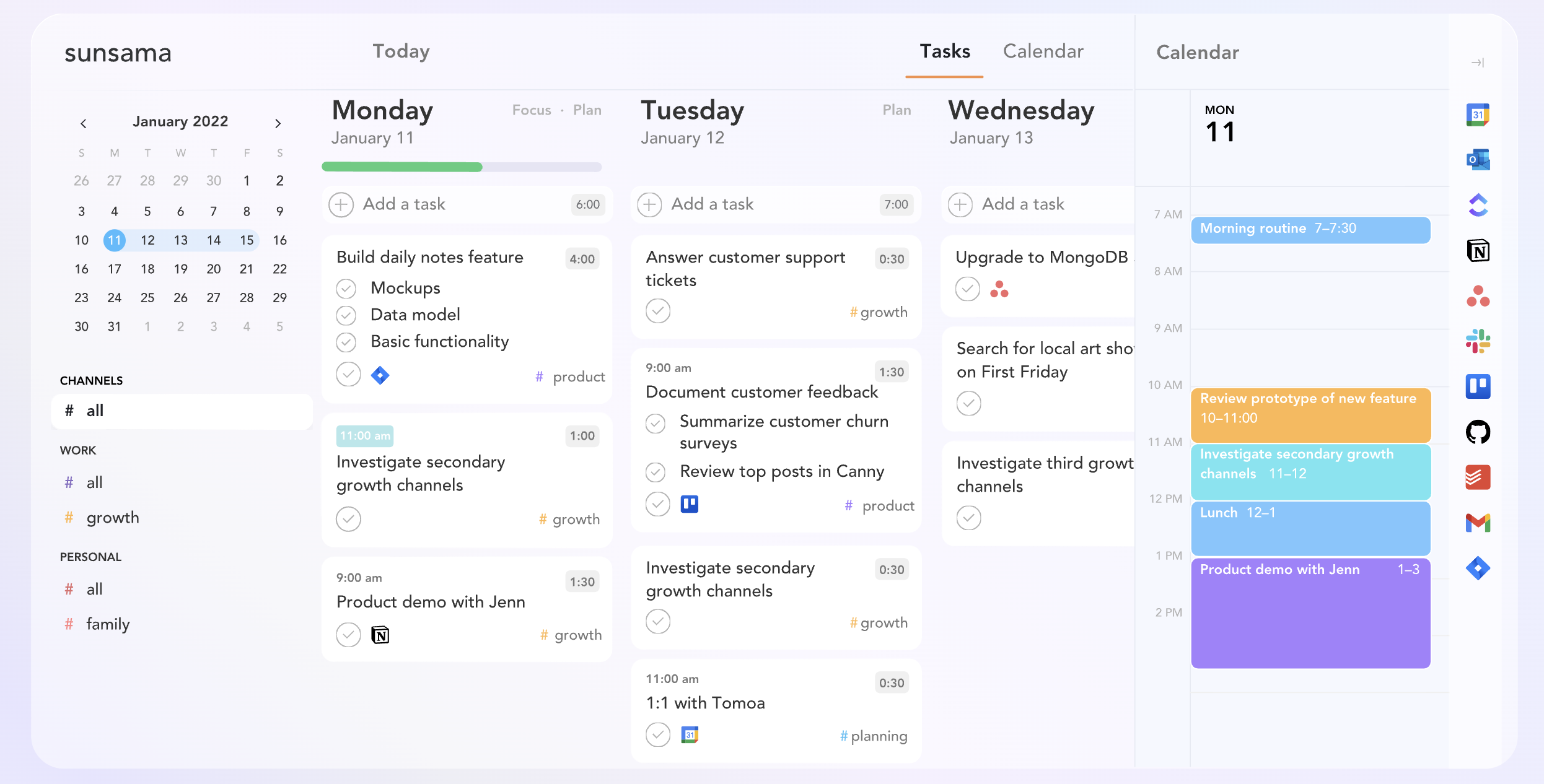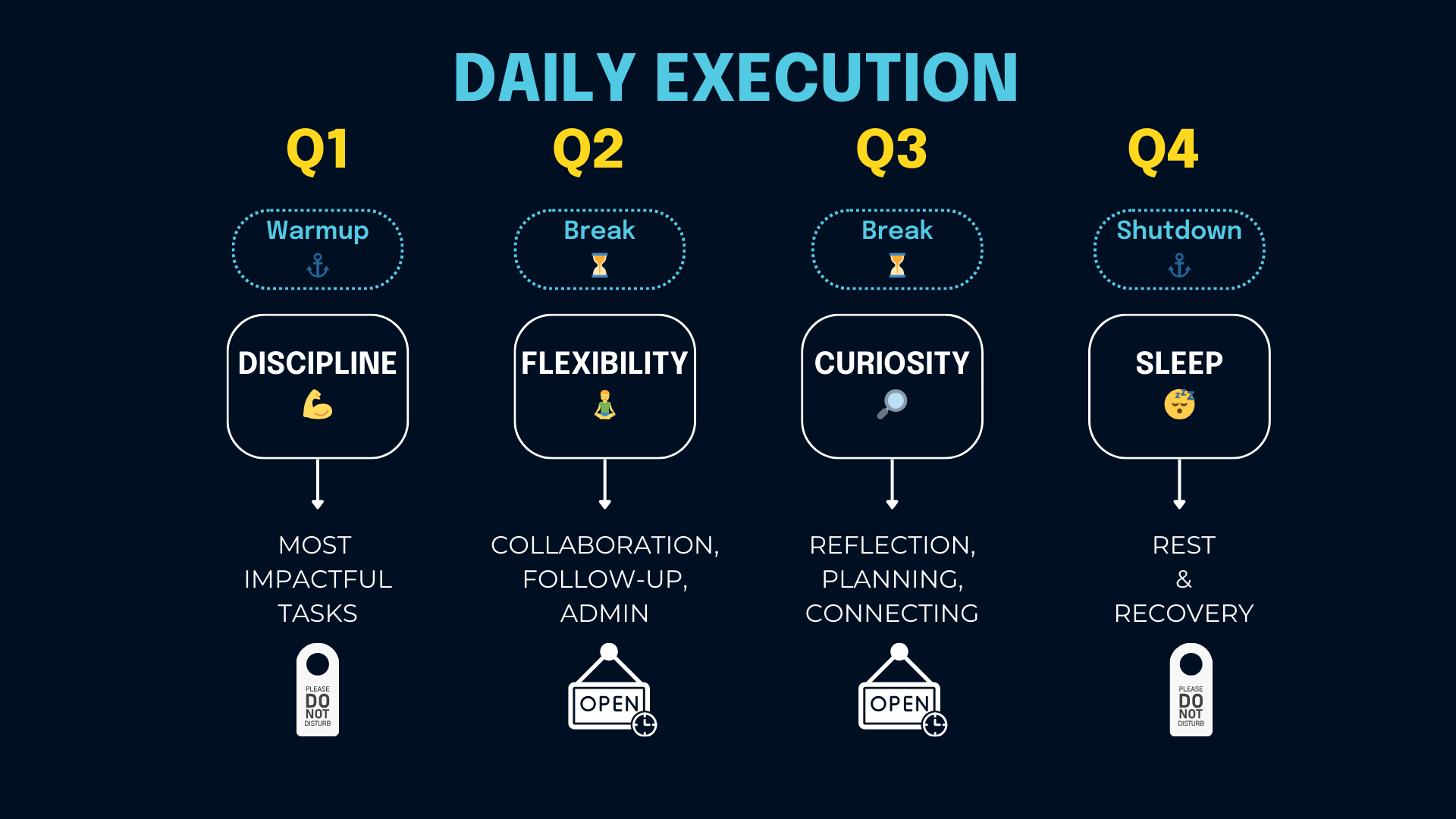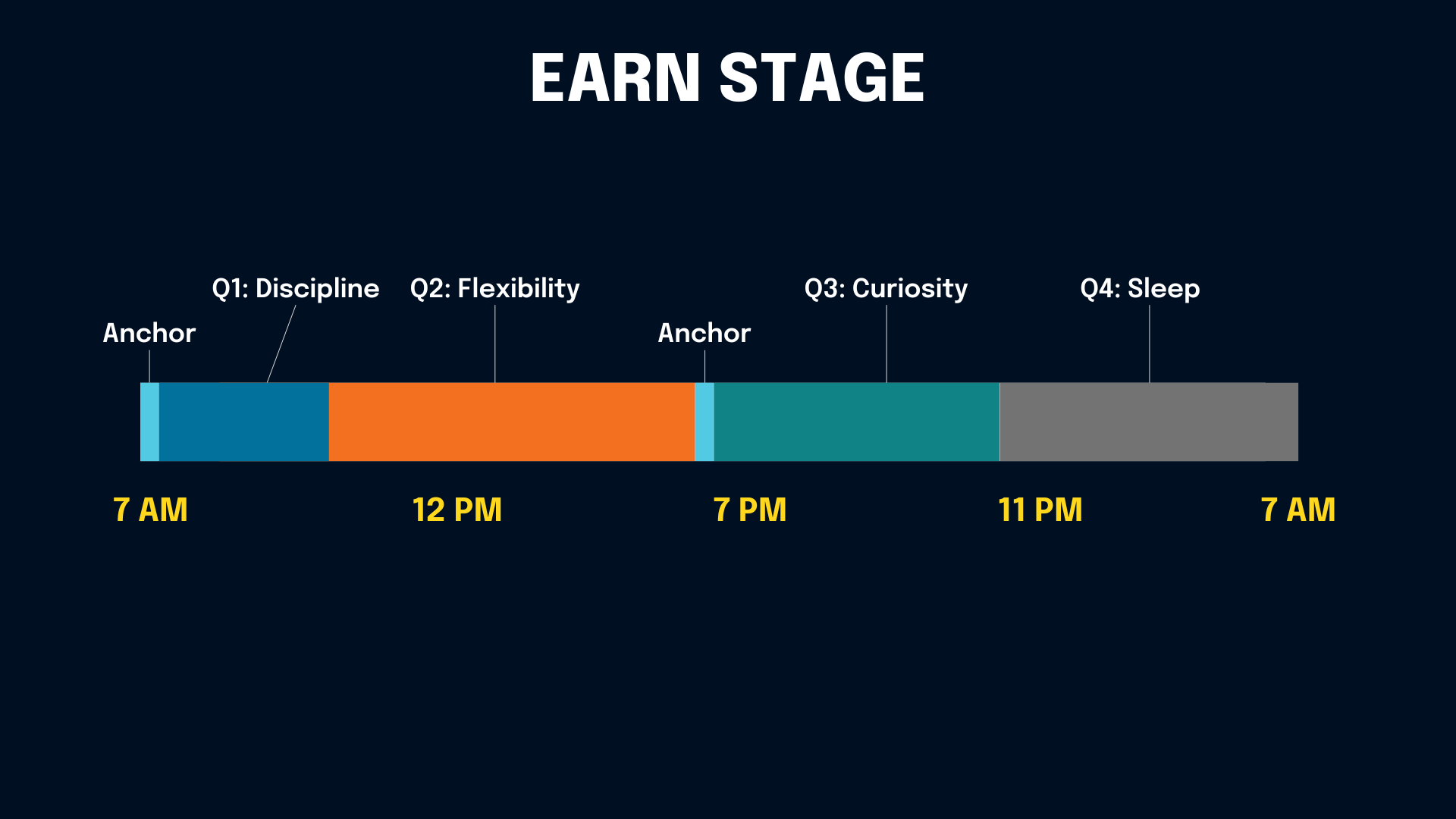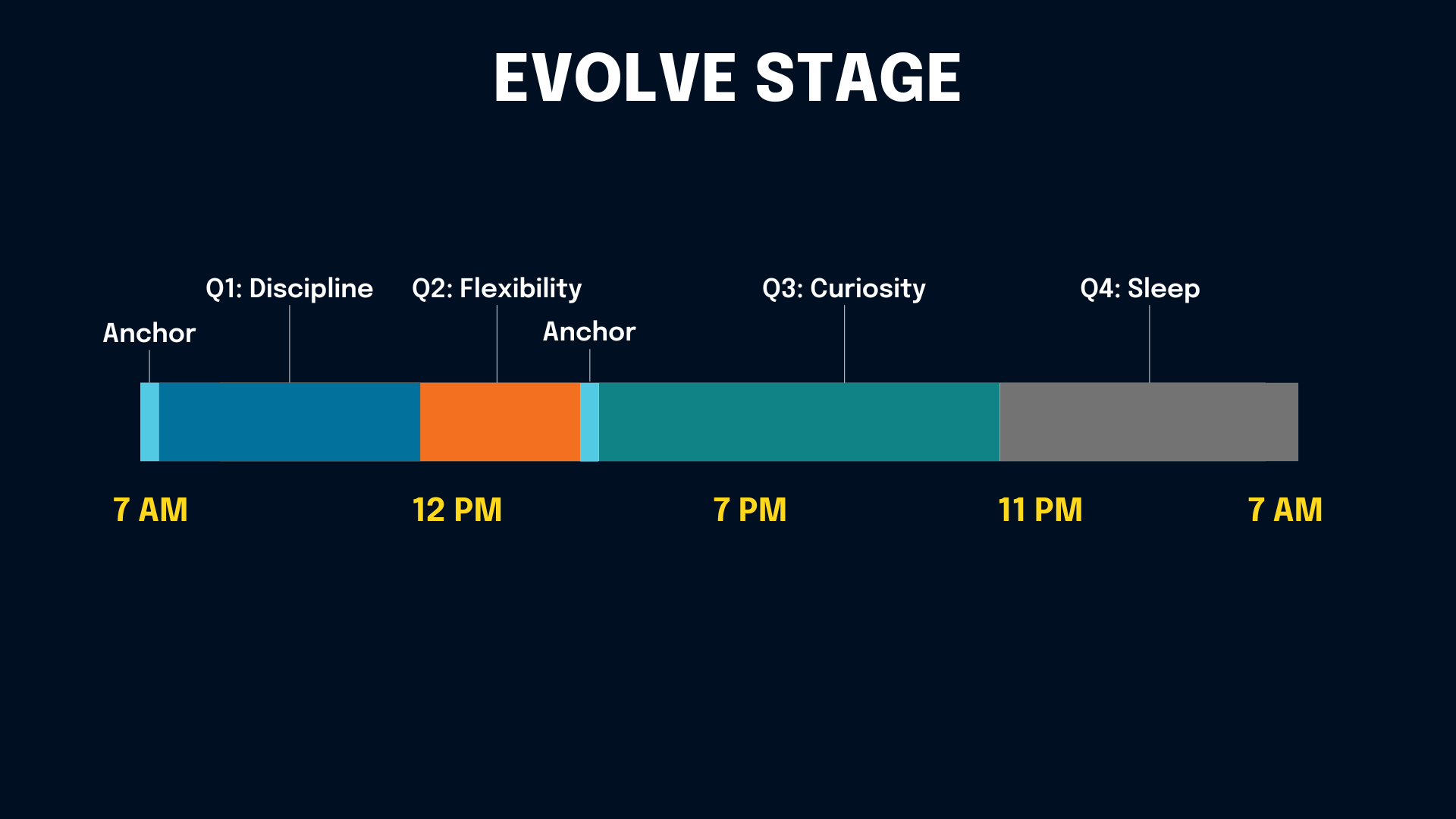⚡️ Today’s level up ⚡️
Today’s edition focuses on the #1 bad habit I see with talented sellers and 5 simple steps you can take to eliminate it.
Let’s go!
Read time: <7 minutes
If you missed last week, read it here.
Multitasking is one of the biggest lies of modern work
“To do two things at once is to do neither.” – Publilius Syrus
I’ve been enjoying the book The ONE Thing by Gary Keller with Jay Papasan.
They dedicate a whole chapter to the myth of multitasking, which sums up many of my own discoveries throughout my sales career, but especially during the most prolific portion when I was consistently closing transformation deals with Fortune 500 companies every quarter.
To work deeper in helping these large organizations develop a better way of operating, I, of course, had to coordinate with others, but I often found myself in longer periods of undistracted focus in order to bring to life a narrative-based proposal or design a killer deck that could wow executives in my upcoming meeting. More and more, I gained the confidence to make my default mode of operation:
• “Away” in Slack
• Do not disturb on
• Google Hangouts turned off
Without spoiling the book, the premise guides you to the fact that “doing the most important thing is the most important thing,” which they do an excellent job articulating and making a strong case for.
Then they ask a key question: “If this is so important, why would you try to do anything else at the same time?”
The science behind why multitasking is bad for your commissions
To answer this important question, they shared a few key studies.
Study 1: Not-so-savvy Stanford students
In the summer of 2009, Clifford Nass, a professor at Stanford University, told the New York Times he had been “in awe” of multitaskers (he had deemed himself a bad one). He and his research team set out to understand what makes multitaskers (supposedly) so effective.
They gave 262 students questionnaires to determine how often they multitasked. They divided the subjects into two groups of low multitaskers and high multitaskers and began with the presumption that multitaskers would perform better. Spoiler alert: They didn’t!
“I was sure they had some secret ability,” said Nass. “But it turns out that high multitaskers are suckers for irrelevancy. They were outperformed on every measure. Although they convinced themselves and the world that they were great at it, there was just one problem: Multitaskers are lousy at everything.”
“Multitasking is merely the opportunity to screw up more than one thing at a time.” -Steve Uzzell
Study 2: The monkey mind
Studying people doing multiple things at once has fascinated psychologists since the 1920s; however, the term “multitasking” didn’t come about until the 1960s.
But here’s the kicker—it was used to describe computers, not humans. It came about because computers could do multiple tasks. However, the term is deceptive because it was about multiple tasks alternately sharing one resource (the CPU). Over time, it got confused and was interpreted to mean multiple tasks being done simultaneously by one resource (a person).
When computers “multitask,” they are actually switching back and forth, alternating their attention until both tasks are done. The speed at which they do this gives the appearance that they are done at the same time. This has created the problem in which humans got compared to computers when it comes to multitasking, giving us a false illusion about its promises.
Of course, we can do multiple things at once—like chew gum and walk at the same time. But what’s been proven, like computers, is that we cannot focus on multiple things at once.
Researchers estimate that knowledge professionals are distracted every 11 minutes and spend almost a third of their day recovering from distractions. Have you calculated the cost of distractions in your role?
“We call it multitasking, which makes it sound like an ability to do lots of things at the same time…A Buddhist would call this the monkey mind. We think we’re mastering multitasking, but we’re just driving ourselves bananas.” – Billy Collins
Study 3: Juggling is an illusion
To the naked eye, a juggler is juggling multiple balls at once. In reality, the balls are being individually caught and thrown in rapid succession.
Juggling isn’t multitasking; it’s an illusion.
Catch, toss, catch, toss. One ball at a time. This is known as “task switching.”
It, too, has hidden costs. Jumping back and forth between menial tasks, like folding clothes and watching TV, is fast and pretty painless. However, when the stakes are raised, say when you are working on a business case for one of your deals and a new co-worker asks you a question about the product on Slack, the relative complexity of those tasks makes it impossible to easily jump back and forth.
Dr. David Meyer researched the costs of task switching and found that there is a huge price to pay. “The cost in terms of extra time from having to task switch depends on how complex or simple the tasks are. It can range from time increases of 25 percent or less for simple tasks to well over 100 percent or more for very complicated tasks.”
In other words, when you are working on something and then asked to do something else, not only is it hard to do the new thing you’re being asked to do, but it will also take longer to get back on track with the original thing you were working on.

Source: The ONE Thing (The1Thing.com)
How to “solotask” your way to generating more revenue
In this week’s Make More Hustle Less Monday session, I shared with the group how I execute high-value activities each day without stress. In fact, my work (as a seller and today as a writer) feels like play—it’s a fun game!
Here’s a summary of how I do it:
1. Turn your to-do list into a success list
Throughout the week, I add things I have to do to my task manager, Todoist. Then, during my weekly organization routine, I stack-rank my tasks by priority. In Todoist, there are four priority levels:
• Priority 1: Red
• Priority 2: Orange
• Priority 3: Blue
• Priority 4: White
Of course, you can use something like The Eisenhower Matrix to help prioritize your tasks, but many sellers fall into the trap of not knowing what is important and urgent. Everything feels important and urgent!
I think about my priority 1 tasks in terms of how they relate to the priorities I outlined in my Annual Strategy and edit during my Monthly Update. Priority 2 tasks are things I need to get done before next week. Priority 3 tasks are those that can wait longer. Priority 4 tasks are the default items I quickly capture in my inbox and “need to be processed/labeled.”
Then, every evening during my shutdown routine (see next step), I pull in all of my tasks that are due for the next day into Sunsama. Because Sunsama integrates not only with Todoist (and other apps) but also with my calendar and email, I only have to make the following considerations:
• Recurring tasks or blocks already in Sunsama: These are the things like my anchor routines (again, see next step) and really important things I try to do consistently each day (like writing new content, or as a seller, this might be prospecting). In addition, I have certain blocks each day for managing my inboxes.
• Meetings: Next are the meetings that I have scheduled for the day. This ensures that not only the length of time for each meeting but also their block of time (1 – 2 PM) are accounted for.
• Priority 1 Tasks: With the above obligations already chunked in for my day (maybe I have 4 hours of work already scheduled), I now start to layer in my priority 1 tasks and try to slot them in when I know my energy level will be highest, say before 11 AM.
• Priority 2/3 Tasks: These get slotted in as I have time for them, and I try to “batch” them together, so if something like “pay a bill” can take less than two minutes, I try to batch them with other things that won’t take that long and bang them out when my energy levels are low, say 2 – 3 PM.
Working this way keeps me focused on one task at a time, allowing me to be stress-free and calm.

Source: Sunsama
2. Set up anchor routines at the start and end of each day
Just as an athlete wouldn’t go straight into lifting the heaviest weight or sprint down the track, nor would they waste time on trivial things when they show up for training, neither should you go straight into giving your time away to others.
The same thing happens on the tail end. They don’t just walk off the field without taking care of themselves by “warming down” and stretching. We can learn a lot from developing these practices each day.
• Warmup: You’re a “mental athlete,” so come up with a short ritual or routine that works best for you (not others, but YOU) so you prime your brain for getting things done well.
• Shutdown: Before closing out the day, take some time to reflect on what went well, what didn’t go well, and something you can be grateful for.
Operating this way will unlock a new level of clarity, and you’ll start to see what truly becomes important and what doesn’t. That’s the key to moving from a chaotic, deficient state to baseline, then pro, then elite, and eventually world-class performance.
3. Divide your workday into quarters

A great way to think about designing a productive workday is to simply divide it into quarters. I like to think about mine like this:
• Q1: The Discipline Zone: After warming up, I focus on my MIT (Most Impactful Task), which is found at the intersection of hard and high value. I am in complete “do not disturb” mode during this time.
• Q2: The Flexibility Zone: After a decent break, I need to be available for others (hence why I need to be more flexible). This is time for meetings, working through my inboxes, and admin tasks.
• Q3: The Curiosity Zone: After another break, this is when I tie up my loose ends from the day, plan out tomorrow, and do some self-reflection before I am present with my family and follow other curiosities in my life (like hobbies, reading a great book, scrolling social, or catching up on a new show).
• Q4: The Sleep Zone: I want to get sound sleep to ensure I am well-rested and recovered and can give it my all in tomorrow’s first quarter.
“Instead of feeling that you’ve blown the day and thinking, ‘I’ll get back on track tomorrow,’ try thinking of each day as a set of four quarters: morning, midday, afternoon, and evening. If you blow one quarter, you get back on track for the next quarter. Fail small, not big.” – Gretchen Rubin
It’s important to note, these are not equally timed quarters, like a basketball game. The time that you can dedicate to each will be dependent on where you are in your career.

If you’re just starting out in your career and in the Learn stage, you may have less time dedicated to the Discipline Zone and need to be more flexible throughout the day.

As you progress in your career and enter the Earn stage, you want to start clawing the flexibility zone back so you can dedicate more time to focused work.

Finally, as you progress to the Evolve stage of your career, now is when you want more time to do the work you want while freeing up even more time to explore your curiosities.

4. Make it clear when you are available
You may get some pushback from others about working on a rhythmic cycle. That’s to be expected, and it’s okay. Fight back the temptation to go back to operating in “constant on” mode.
Remember: Clients and your employer don’t pay for responses; they pay you for results
No one is going to die if you don’t respond within 15 minutes. Unless you’re selling highly commoditized and transactional things like cars or homes, setting up buffer blocks to batch emails and Slack responses every couple of hours will do a world of good to your stress, mood, and output.
5. Kill your distractions
Redesign your smartphone so that you aren’t a slave to it every time there’s a news update, social notification, or new email.
The same is true for your desktop. Try to limit yourself to the core essentials by setting up the useful tabs you need open upon launching Chrome, and use tools to monitor and edit your screen time on distracting apps.
It’s important to remember, this is a journey, not a one-and-done fix. Incorporating these five steps will help you scale back your multitasking and allow you to start putting more focused effort into what’s important. Waiting on the other side is success and satisfaction on your terms.
That’s a wrap. See you next week!
Here’s how I can help you right now:
1 | Unlock the 7 Figure Seller OS
Learn how to use design and systems thinking to become a 7 figure seller. There are 3 options to allow you to customize your learning journey.
2 | Download The 7 Figure Open Letter
Get the creative strategic selling strategy that landed a $5.9M deal with a top 4 major global airline. Bonus inside!
3 | Book a 1:1 coaching session right now
You can book a 60-minute coaching session with me (although the Pro above option provides access to 1:1 coaching with me at a 70% discount.

